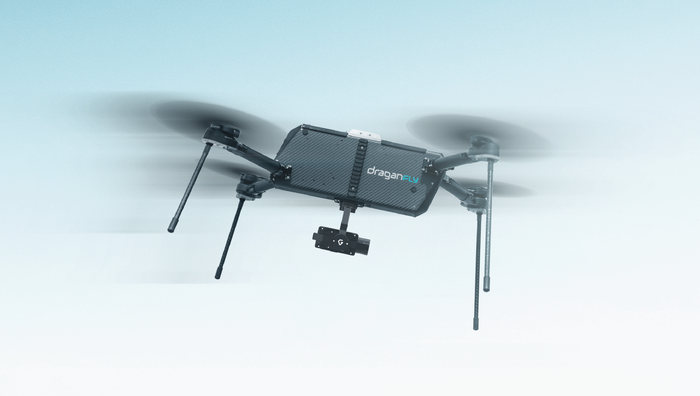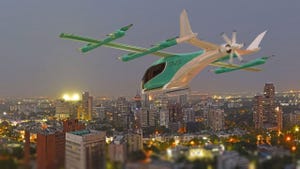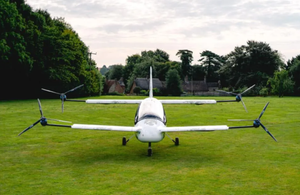Radar Sensors Improve Smart Home Security, Safety, Comfort, and MoreRadar Sensors Improve Smart Home Security, Safety, Comfort, and More
As the acceptance and desire for smart homes increases, homeowners now expect improved comfort, safety, and security features.
August 31, 2023

Sponsored Content
By: Tanja Hofner, Lead Principal Hardware Systems Engineer, Power and Sensor Systems, Infineon Technologies
In modern smart home systems, passive infrared (PIR) sensors and video cameras are common sensors. However, both sensing technologies have shortcomings. With the availability of cost-effective, fully integrated radar sensors designed for home applications, system designers can replace or augment PIR and camera sensors and gain several system benefits as well. In addition to improved security and safety, other benefits include reduced home energy costs, increased comfort, new non-invasive monitoring applications, and more.
Presence and Visual Sensing in Smart Homes
There were an estimated 300 million smart home households in 2022 with the number of smart homes worldwide projected to exceed 500 million by 2026 [1]. As the acceptance and desire for smart homes increases, homeowners now expect improved comfort, safety, and security features. Many of these types of capabilities/features are initiated by sensing a presence or identifying a person.
In a smart home, presence/absence detection for activation/deactivation is commonly performed by a passive infrared (PIR) sensor. Video cameras identify a person or persons to authorize access or verify authorization to be in a specific place. Both of these sensing approaches have shortcomings or undesirable aspects in smart homes.
Since it measures infrared (IR) light radiating from objects in its field of view (FoV), a PIR sensor cannot “see” or go through walls or obstacles and has environment limitations as well. While a PIR sensor could be acceptable for many circumstances, during e.g., wildfire season the protection they provide could be severely compromised. Particles in the air in smokey or foggy environments can prevent reliable activation for PIR sensors.
Video cameras are used both externally and inside smart homes for safety and security. However, a video camera that is constantly on has high power consumption. Also, with the desire and need for more privacy, cameras can be an intrusive sensing technique, especially in bed-/bathrooms.
In contrast, radar sensing can provide a highly reliable alternative or supplement to help augment home safety and security --- even in areas where privacy is needed.
Radar Sensing in Smart Homes
Radar sensing is increasingly being applied to new applications in smart homes and other non-traditional areas. Unlike 24 GHz, 60 GHz technology can easily include transmit/receive antenna(s) within the integrated circuit (IC) package to achieve a smaller package. Since they operate at microwave frequencies, radar sensing implemented at the device level is also called a monolithic microwave integrated circuit (MMIC) sensor. Both Doppler and frequency modulated continuous wave (FMCW) operating modes are used in these sensors.
Doppler radar uses the Doppler effect where a change in the frequency of a wave occurs when the source of the wave is moving with respect to the observer. In FMCW operating mode, the radar sweeps the transmitter frequency to encode and determine range. FMCW operation allows simultaneous measurements of target range and velocity, high accuracy of range measurements, and reduced interference with other sensors.
In a radar sensor, presence detection simply needs a single transmit (Tx) and a single receive (Rx) antenna. Unlike a PIR sensor that only detects presence, the motion detection capabilities of radar can keep the lights on in a smart home when the individual stays in the room or even automatically shut them off if they go to sleep --- depending on how the end product’s algorithm is developed.
With a MMIC sensor, the sensor’s power consumption can be < 1 mW. As a result, radar sensing can save energy by implementing power-saving smart activation/deactivation features. Radar sensing can add additional functionalities to increase comfort and safety in a smart environment and provide considerable energy savings (Figure 1).
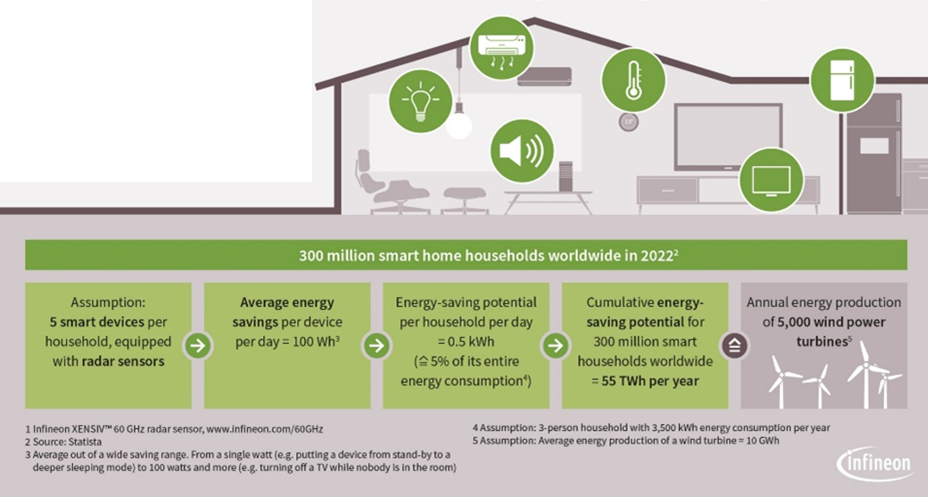
Figure 1. Radar sensors can help to reduce the energy consumption in homes and other buildings by smart presence detection.
Highly Integrated Radar Sensors
Infineon’s XENSIV™ 60 GHz radar sensors are part of Infineon’s sensor focus. 60 GHz radar products have different Tx/Rx Antenna-in-Package (AIP) configurations with Doppler, FMWC, and cascading designs, and different size packages (Figure 2).
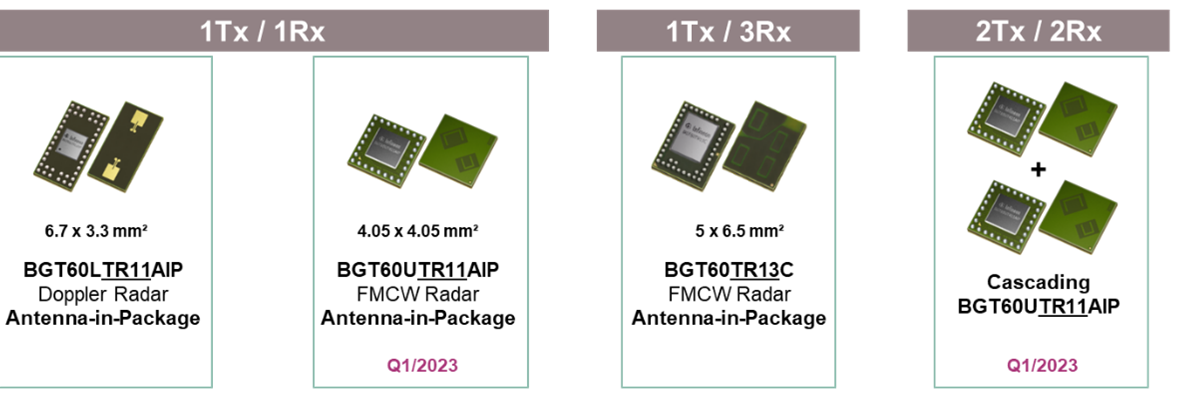
Figure 2. Available configurations for 60 GHz radar sensors come in different IC packages.
The BGT60LTR11AIP Doppler radar MMIC is a smart and cost-effective PIR replacement. Its Doppler radar with integrated detectors provides a completely autonomous mode and the most convenient way to implement radar in an end system. Due to high sensitivity, it will detect any motion down to micro motion level. A finite state machine (FSM) enables operation of the device autonomously, so it does not need an external microcontroller (MCU) or further signal processing.
The BGT60LTR11SAIP is a down-specified version of the BGT60LTR11AIP 60 GHz MMIC sensor meant for presence detection only [2]. With the best price-performance ratio for radar sensing, the operating temperature range is reduced from -20 to +85 °C (industrial range) to -10 to +70 °C (commercial range). The typical/maximum detection ranges are 4m/6m respectively instead of 5m/7m. It consumes < 2 mW with adjustable duty cycling.
The BGT60UTR11AIP is a compact and cost-efficient radar chip for FMCW (5.5 GHz BW) operation. As the smallest (4.05 x 4.05 mm2) 60 GHz AIP chip on the market, it can still provide presence detection, gesture control, vital sensing, 1D ranging, and material classification. Unlike the BGT60LTR11AIP, it requires an external MCU and expertise in radar signal processing for system design. It provides < 1 mW average power consumption.
The BGT60TR13C (1Tx/3Rx) can detect presence as well as segment and track human targets. The non-invasive approach represents an excellent trade-off between price and performance. Providing contactless interactions without intruding on privacy, during sensor operation, it consumes < 5 mW under duty cycled conditions.
Radar Use Case 1: Micro-Motion Sensing
In addition to presence, segmentation/tracking, and gesture sensing, with the right algorithm, the BGT60TR13C has micro-motion sensing capabilities that can detect and measure vital signals including heartbeat and breathing rate for baby monitors, elder and shut-in care. The heartbeat rate is ±2.8 bpm at 1 m (max). The breathing rate is ±1 bpm at 1 m (max). The dynamic respiration rate and heartbeat can be displayed with a graphical user interface (GUI). Using this micro-motion sensing capability, one customer has even developed proprietary algorithms to create an easy-to-use sleep monitoring solution.
Radar Use Case 2: Automotive Aftermarket Designs
Many radar sensor applications are being addressed by automakers and their suppliers: however, some applications are being developed by automotive aftermarket suppliers. One example is truck bed monitoring. Using the consumer-grade 60 GHz radar sensor, the application would not require the automotive temperature range and extensive qualification that an automaker would mandate.
One aftermarket supplier has developed a system to monitor a truck bed with 60 GHz radar sensors. Two sensors scan the truck bed, control the FoV, and determine whether the system is seeing one/multiple individuals in close proximity or reaching into the truck.
The low-power radar is continuously active/alert and wakes up a camera through a trigger point for a visual signal transmitted to the truck owner when someone walks by or reaches into the truck bed. With all the other loads draining the vehicle’s battery, especially in extended periods of non-use, the design intent of the developer was to operate the system for a few weeks with full power control by the end user. The use of a radar sensor to wake up a camera can be applied to numerous other security situations where power consumption is a key concern.
Getting Started
With the Infineon Developer Center, designers have an access point for a variety of time saving tools. These include a Radar Development Kit (RDK), different demo boards, a software ecosystem provided through ModusToolbox™, and services.
With ModusToolbox and different startup codes, system designers can quickly modify available codes to address specific requirements. Also, embedded code already flashed on the MMIC provides the easiest way to use existing radar software, if the embedded code algorithms provide what the end application needs. Modular approaches allow a system designer a variety of options to adapt existing software to meet their requirements.
Be Creative & Differentiate with Radar Sensing
The increasing acceptance of smart home systems with a variety of features for comfort, security/safety provides a driving force for system differentiation. Instead of being restricted by and limited to established PIR and camera-based products and their shortcomings, system designers can now implement modern radar technology into their systems. Infineon’s newest radar sensing products provide convenient starting points for radar newcomers as well as advanced sensing capabilities for experienced radar users. With the demonstrated capabilities of low power and non-invasive, reliable vital sensing using radar in smart home devices, advanced and even commonly expected, but improved, sensing can easily be included in next gen designs.
References
[1] Smart Home – Market Data & Forecast 2022https://www.statista.com/study/42112/smart-home-report/
[2] BGT60LTR11SAIP, https://www.infineon.com/cms/en/product/sensor/radar-sensors/radar-sensors-for-iot/60ghz-radar/bgt60ltr11saip/
You May Also Like

